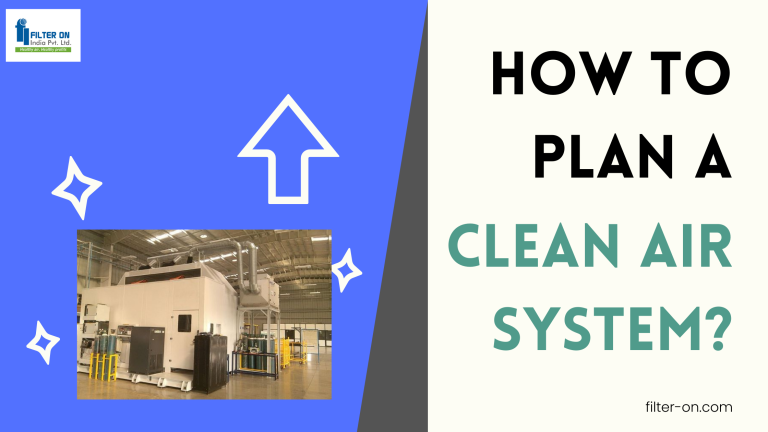Planning is the first step when you think of any new project or anything that needs to be organized. For example, if you want to organize a workshop on some industrial topic, you need to plan the most important aspects carefully, such as the date and time of the workshop, the venue, the visiting guest, the number of attendees, and so on. Similar principles apply when you plan a total clean air project solution. In industries with continuous production, numerous applications like welding, brazing, gauging, soldering, laser cutting, plasma cutting are performed every day. Fumes generated from these processes are hazardous for operators or workers and can disturb the entire work environment. Therefore, it is essential to plan a clean air system strategically to ensure effective operation and worker safety. In this article, we discuss how to implement a clean air system efficiently.

Why is planning a clean air system important ?
One of the biggest reasons for failure to implement clean air systems in manufacturing industries is a lack of awareness about the importance of the planning phase. Because of this, the implementation of clean air systems is done in a very haphazard manner with a fragmented approach. The result is that resources are spent without much result on the ground. This can be avoided if proper planning for clean air systems is made.
What to Plan for Clean Air Systems?
The final objective of any clean air system implementation is to minimize exposure to air pollution for people working in close proximity to various processes and ensure protection of their health and productivity. Thus, the plan should be aligned with this objective. There are certain standards set for ambient air quality that are recommended to be followed by global bodies like ACGIH (American Conference of Governmental and Industrial Hygienists), OSHA, ISO, etc., which are also adopted by local regulatory authorities like the Factories Act and CPCB.
The first step in planning the clean air systems properly is to check the actual air quality at the workplace and compare it with the standard’s requirements. This will bring visibility to where the gaps in compliance are. Which stations are most polluting? And such stations would be the best candidates to start the implementation of clean air systems, as they will give maximum returns on invested resources.
This exercise is known as air quality mapping. FilterON provides this service with the help of a real-time laser aerosol monitoring system. This exercise would provide very important baseline data on pollution levels at each station for the users, which can be a great input for decision-makers.
How is air quality mapping done to plan a clean air system effectively?
A Filter A representative with expertise in the air pollution control system sector will take samples from each and every robotic and manual welding station. With the help of a portable digital aerosol monitor, the reading of air quality in terms of mg/M3 of dust concentration is recorded. These readings are plotted on the layout and marked as red, yellow, and green categories.
Red: Pollution levels are way higher than the requirements of the standard
Yellow: pollution level on the borderline of the upper limit recommended in the standard andGreen: pollution levels below the limits mentioned in standards (i.e., safe air quality).
This mapping exercise will be followed by a recommendation and a report regarding:
To reduce pollution levels drastically, where should I focus the resources most?
Which type of system would be best suited for the said applications?
This exercise would help users define the requirements of planning an clean air systems more objectively and rationally, and it would be a great planning tool for the implementation of effective clean air systems.
How does air quality mapping help in planning clean air system?
- AQ Map can help identify the ‘hot spots’ i.e., workstations generating the highest pollution in the layout
- Can help the planners ‘prioritize’ the budgets for these ‘hot spots’ so that maximum effectiveness can be achieved in any given budget.
- Generally, 20% of the workstations in the layout will be responsible for generating 80% of pollution. The AQ Map helps the planner identify those 20% of workstations for ‘targeted action'.
- It helps the planners to chalk out the ‘Clean Air Plan’ and implement it phase-wise. The AQ Map becomes an effective tool for monitoring the progress of such a plan.
Filter On India has been working towards “Mission Zero Pollution” for the last 40+ years as a clean air solutions partner for industries. Filter On has 70+ clean air solutions, so you can contact us for more information about our solutions. You can reach us through the web or visit us at Pune, Delhi, Bangalore, or Chennai locations.
Facebook
Twitter
LinkedIn


